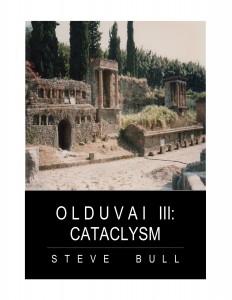Home » Posts tagged 'biosphere'
Tag Archives: biosphere
The Bulletin: October 22-28, 2025
The Bulletin: October 22-28, 2025 This past week’s articles of interest… CLICK HERE If you’re new to my writing, check out this overview. Japan Pushes Back on U.S. Pressure to Halt Russian Energy Imports | OilPrice.com Demystifying Collapse Western Media Finally Admit That Trump’s Mobilisation of Forces Against Venezuela Is All About Regime Change | […]
Biospheric Cognition
Biospheric Cognition and biospheric awakening If we are going to nurture into being an ecological civilization, or an ecological culture, we’re going to require what in this writing I will call “biospheric cognition”. Cambridge Cognition offers a limited and insufficient first stab at defining cognition here.: “Cognition is defined as ‘the mental action or process of […]
The Anthropocene
The Anthropocene
Victor Gorshkov: a life for the biosphere.
Victor Gorshkov: a life for the biosphere. The basic concept of the biotic regulation of Earth’s temperature according to Gorshkov et al, 2002. The figure shows the potential function U(T) for the global mean surface temperature. Stable states correspond to pits, unstable states to hills. The modern value of +15°C (288 K) approximately corresponds to an unstable […]
Workers’ Power vs. Climate Destroyers: What It Will Take to Save the Planet
Workers’ Power vs. Climate Destroyers: What It Will Take to Save the Planet Humanity faces a multi-faceted crisis. Endless wars of imperial aggression, both overt and covert– from Iraq, Syria, Libya and Afghanistan to Yemen, Palestine and Central and South America. These conflagrations compel those at the bottom of the economic pyramid to fight and die […]
Three Climatic Monsters with Asteroid Impact
Three Climatic Monsters with Asteroid Impact Photo by Logan Fulcher | CC BY 2.0 Three monster climatic events are currently shaping up to collide. It’ll be like an asteroid collision. In that regard, this article, in two parts, explores real, already happening, indisputable climate change that is starting to take down ecosystems throughout the biosphere. […]
The Ecosystem is Breaking Down
The Ecosystem is Breaking Down Photo by Richard Allaway | Public Domain The ecosystem is the quintessential essence of life on our planet, and this crucial life system is showing signs of breaking down. It is likely a more pressing problem than climate change. Time will tell but time is short. The ecosystem consists of […]
Why We Consume: Neural Design and Sustainability
Why We Consume: Neural Design and Sustainability Exponential economic growth is rapidly destabilizing the biosphere. Among the many factors that stimulate such growth is the human tendency to consume goods and services far beyond what is required to meet basic needs. We have to grasp what drives this tendency in order to manage it. The […]
Shrinking the Technosphere, Part IV
Shrinking the Technosphere, Part IV In the previous parts of this series, we started picking away at a very big subject: what a successful strategy for bringing about rapid social change would look like, such social change being necessary if we were to avoid the worst ravages of catastrophic climate change. This change must introduce […]
Leaving Our Children Nothing
Leaving Our Children Nothing Our generation has a unique opportunity. If we set our minds to it, we could be the first in human history to leave our children nothing: no greenhouse-gas emissions, no poverty, and no biodiversity loss. That is the course that world leaders set when they met at the United Nations in […]
‘An Ecomodernist Manifesto’: Truth and confusion in the same breath
‘An Ecomodernist Manifesto’: Truth and confusion in the same breath I really do want to applaud the Breakthrough Institute’s recently released paper called “An Ecomodernist Manifesto.” It speaks with candor about the possible catastrophic consequences of unchecked climate change. It recognizes the large footprint of humankind in the biosphere. It wants to address both, and it wants to do […]



